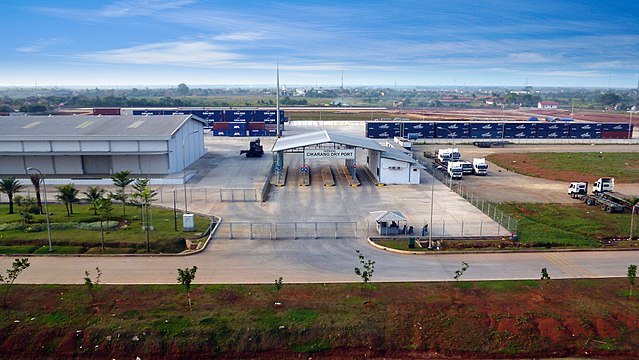A mega agro-industrial plant for processing cassava, rice and maize is beginning in western the Democratic Republic of the Congo (DRC).
The joint public-private project got clearance on October 1, 2025 at Mbanza-Ngungu, Kongo Central province, costing $1 billion.
With a land lease for 99 years, the plant will cover 104,000 hectares with an annual output of 0.7 million tonnes.
According to Mole Group’s chief executive Gandi Mole, whose company represents the governmental share, the project will generate some 20,000 indirect jobs.
Switzerland, home to Mole Group, is partially supporting the input side of the undertaking through equipment provisions.
A part of the 1 billion dollars behind the venture might come in form of equipment since the funding structure is still ongoing.
Churning out Food Staples
Irrespective of the funds’ distribution method, the project will be instrumental at transforming the DRC’s food staple value chain.
The chain was already rolling in July 2024 when the African Development Bank (AfDB) offered $260.4 million for cassava and cereals production.
The funds were to cultivate four crops on 295,000 hectares using treated seeds with ample disease resistance.
Kongo Central was among six provinces that benefited from the AfDB support, a production factor that will come handy in the latest milling project.
Cassava milling is especially pertinent because the Great Lakes region country has the highest consumption rate of the tuber globally.
There have been plans beginning 2023 of substituting 10-20% of wheat flour in bread with cassava flour to offset wheat import costs.
For maize, an uphill climb lies ahead before processing can prosper because Congo depends on imports via dry ports, including Sakania.
In early 2025, ease of entry of imports sharply brought down Congo’s maize prices to 46,000 CFA francs ($82.02) per 25 kg.
Meanwhile, the government has been trying to push up maize production from the current mere 1/3rd of national consumption. For the DRC cassava sector, the call is for uptick processing into consumer products since production is sufficient. As such, the following statistics further exploit the production patterns of each of the two crops.
DRC Cassava and Maize Statistics
Cassava and Maize are some of the food staples that grow in the Democratic Republic of the Congo (DRC). The production profile of each however differs like oil and water – with cassava having the upper hand. The Congo country prides as being the world’s second largest producer of cassava, at approximately 45.2 million tonnes annually (2023). Only Nigeria at 60.8 million tonnes (2022) produces more. The FAOSTAT data below gives an historical perspective of output in the early 2000s.
| Year | Production [tonnes] |
| 2023 | 45,173,584 |
| 2022 | 43,830,314 |
| 2021 | 42,526,987 |
| 2020 | 42,769,463 |
Regarding maize, the DRC averages below 3 million tonnes in annual output while its consumption stands at 13 million tonnes (2024). For this reason, very little of the crop processes into corn oil. Instead, the country imports 3/4 of its needs from mainly South African countries, via rail. The below profile courtesy of the FAOSTAT underlines the DRC’s maize production facts in the early 2020s:
| Year | Production [tonnes] |
| 2023 | 2,335,599 |
| 2022 | 2,283,672 |
| 2021 | 2,243,379 |
| 2020 | 2,186,150 |
How high is the cassava consumption per capita in Congo-Kinshasa?
Cassava ranks 1st among all staple foods in the DRC in terms of per capita consumption, just ahead of maize. In 2022, consumption hit 419.28 kg per person per year, according to the Crop Observatories Alliance. This was the highest consumption rate worldwide that year.
